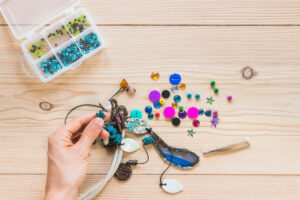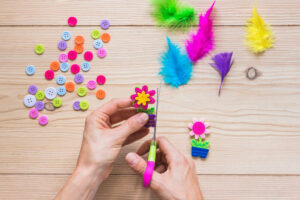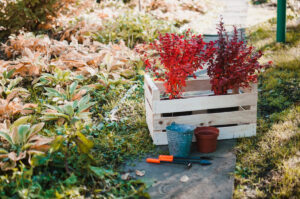The DIY & Crafts Blog
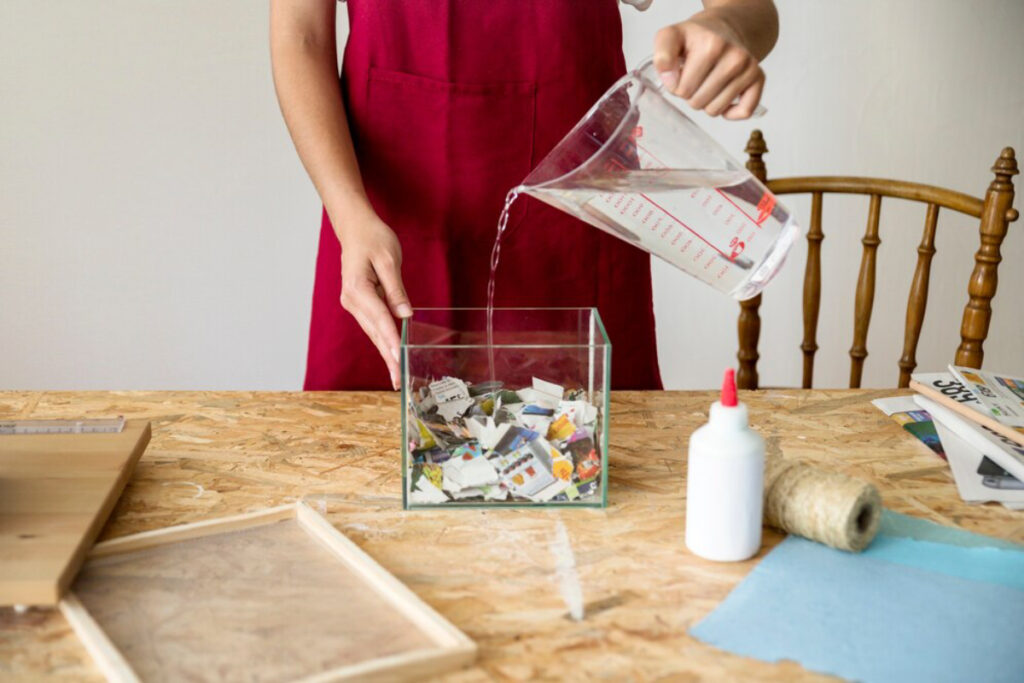
How to Make Recycled Paper at Home
Making your paper is an eco-friendly, fun craft project that lets you eliminate waste material while creating beautiful, homemade sheets. From personalised stationery to DIY greeting cards, DIY recycled paper answers your sustainable and creative requirements. And it’s an easy, fun activity for kids and adults who enjoy some hands-on crafting.
This guide will teach you how to make handmade paper from old newspapers, junk mail, and scrap paper. Its step-by-step approach ensures you can turn unwanted paper into stunning new creations while contributing to paper upcycling projects that help the environment. You’ll also discover creative ways to use your handmade paper and tips to enhance the process.
Why Make Your Recycled Paper?
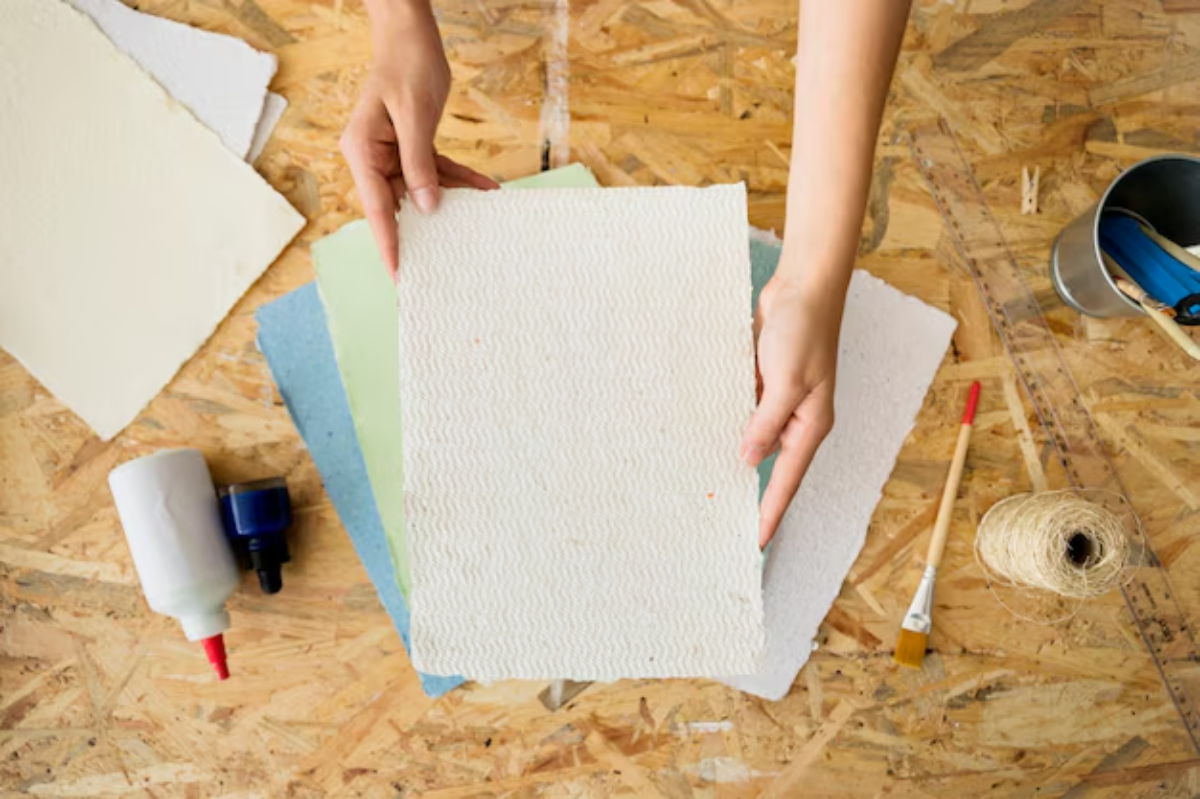
1. Reduces Waste & Helps the Environment
- Upcycling old paper prevents it from ending up in landfills, reducing pollution.
- Reduces the demand for new paper production, which helps save trees and conserves water.
- Promotes sustainable crafting and responsible waste management.
- Encourages a circular economy by repurposing existing materials.
2. Creates Unique & Customisable Paper
- Handmade paper has a rustic, textured look perfect for special projects.
- You can add dried flowers, herbs, or natural dyes for a personalised touch.
- Works excellent for invitations, scrapbooking, and other creative designs.
- The thickness and texture can be adjusted based on personal preference.
3. Fun & Educational Craft for All Ages
- It is a great activity that teaches kids about recycling and sustainability.
- Encourages creativity and patience while crafting helpful something.
- It is easy to do at home with minimal tools and materials, making it an accessible craft. Tearing, blending, and pressing paper help develop fine motor skills in younger children.
Pro Tip: Experiment with Textures: Add coffee grounds, tea leaves, or glitter for unique effects.
Materials Needed for DIY Recycled Paper
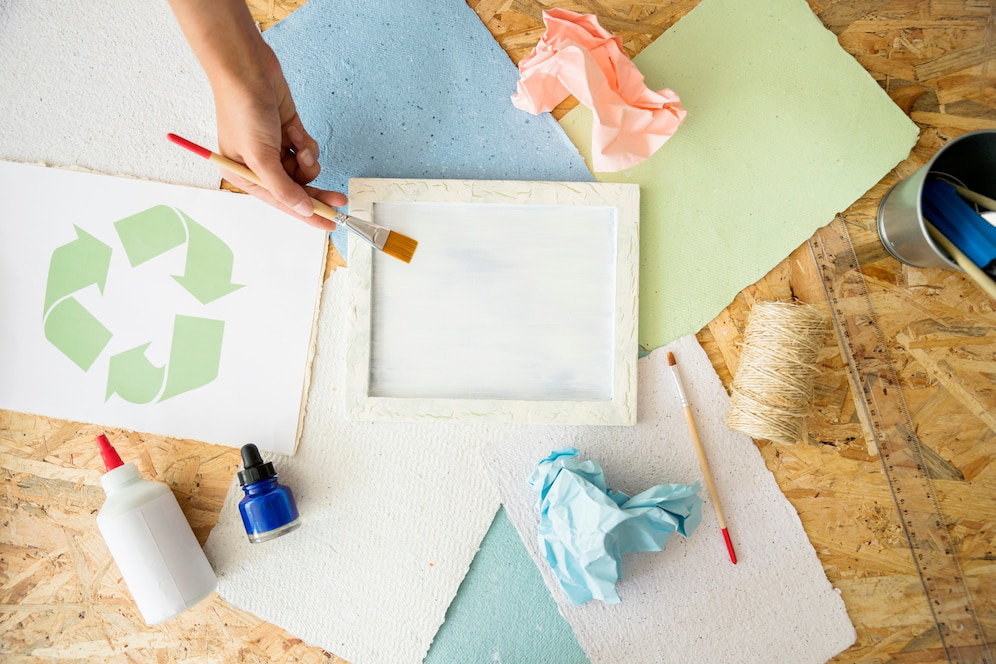
Before you begin, gather the following supplies:
- Old newspapers, scrap paper, or junk mail (avoid glossy pages as they contain plastic coatings)
- A blender or food processor (dedicated to crafting, if possible)
- A large tub or basin filled with water
- A wooden frame (or an embroidery hoop with mesh)
- A piece of fine mesh or a window screen
- A sponge for pressing out excess water
- A rolling pin or heavy book to flatten the paper
- Towels or felt fabric for drying
- Water
- Optional: Dried flowers, leaves, food colouring, or essential oils for added design
Important Tip: Pour more pulp for thicker paper or spread it thinner for delicate sheets.
Quick Guide to Making Handmade Paper
Step 1: Prepare the Paper Pulp
- Tear the old paper into small pieces (about 1-inch squares) to make blending easier.
- Soak the torn paper in a water bowl for a few hours or overnight to soften the fibres.
- Blend the soaked paper with fresh water until you achieve a smooth, pulpy consistency.
- Add food colouring, flower petals, or herbs to create decorative paper if desired.
- Ensure the pulp is neither too thick nor too thin; adjust by adding more water if necessary.
Step 2: Set Up the Mould & Deckle
- Secure the mesh or screen onto the wooden frame using staples or glue.
- If using an embroidery hoop, place the mesh between the inner and outer rings and tighten.
- Fill a large tub or basin with water and add the blended paper pulp, stirring to distribute the fibres evenly.
- This ensures a uniform texture when forming the sheets.
Step 3: Form the Paper Sheet
- Dip the frame into the pulp mixture, allowing an even layer of fibres to settle on the mesh.
- Gently lift the frame, letting the excess water drain away while keeping the paper evenly spread.
- Lightly shake the frame to ensure an even thickness throughout the sheet.
- Let the sheet settle for a minute before carefully transferring it onto a towel or felt fabric.
Step 4: Remove Excess Water & Dry
- Use a sponge to press out as much excess water as possible from the paper sheet.
- Place another towel or felt fabric on the sheet and press firmly with a rolling pin or heavy book.
- Carefully peel off the paper and place it flat to air dry for 24-48 hours.
- Once dry, gently peel the handmade paper off the drying surface and press under a book to flatten if needed.
Creative Ideas for Using Your Recycled Paper
Once your DIY recycled paper is ready, you can use it for a variety of projects, including:
- Handmade Greeting Cards: Add a personal touch to celebrations with uniquely textured paper.
- Gift Tags & Wrapping Paper: Elevate gift-giving with custom eco-friendly paper.
- Scrapbooking & Journal Pages: Use handmade sheets for creative journaling and memory books.
- Bookmarks or Personalised Stationery: Craft bespoke bookmarks or writing paper.
- Artistic Collages & Wall Décor: Frame your handmade paper or use it as a canvas for artwork.
- Eco-Friendly Invitations: Great for weddings, baby showers, and events where sustainability matters.
Common Mistakes & How to Avoid Them
1. Paper Too Brittle?
- If your handmade paper cracks or breaks easily, it may be too dry. Try adding more water when blending the pulp.
2. Uneven Texture?
- Ensure you stir the pulp in the basin before dipping the frame to distribute the fibres evenly.
3. Takes Too Long to Dry?
- If your paper takes more than 48 hours to dry, consider placing it near a fan or in a well-ventilated area.
4. Paper Sticking to the Surface?
- Always use a non-stick drying surface like felt, fabric, or silicone baking mats.
Secret Tip: Add a few drops of essential oils to the pulp for a pleasant fragrance.
FAQs on Making Recycled Paper
- Can I use glossy or coated paper for recycling?
No, glossy or coated paper contains plastic and won’t break down properly in the pulp. Stick to newspapers, printer paper, or old notebooks. - How can I make my handmade paper smoother?
After drying, use a rolling pin or press it under a heavy book to achieve a flatter, smoother finish. - Can I make scented handmade paper?
Yes! To add a pleasant fragrance, add a few drops of essential oils, such as lavender or citrus, to the pulp. - How do I add colour to my recycled paper?
Natural dyes like beet juice, turmeric, and spinach can add beautiful colours without artificial chemicals. - How long does handmade paper take to dry?
It usually takes 24-48 hours, but drying time can be reduced by placing it near a fan or in a well-ventilated area.
Embrace the Art of Paper Upcycling
How to Make Handmade Paper at Home: a Sustainable Craft Whether making cards, artwork or personalised stationery, this straightforward and rewarding process helps recycle old paper, reduce waste and give it a second life.
So why not gather scrap paper and start crafting your beautiful, eco-conscious creations today?
Have you tried making recycled paper? Share your experiences and creative ideas in the comments below!



